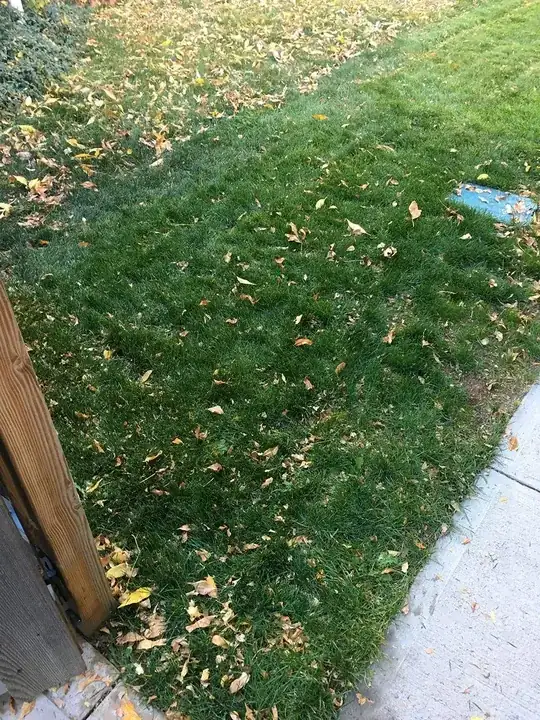In no way is fungus making or breaking a lawn bed. You've had another not so nice fungus such as snow mold that has decimated chunks of your lawn over the winter. Is your lawn just one type of cool season grass seed? Kentucky and that is it? There is a reason grass seed is a combination of species.
Forget rhizomes and stuff, your lawn needs to be raked. The dead debris raked up and disposed of in your compost pile. Re seed with a mix heavy on blue grass but not pure bluegrass. The live grasses look almost over fertilized. What have you fertilized with? How established was your lawn? Where is it you live? Did you happen to use any crane fly control last year? Any other pesticides?
Maybe you should use pure Kentucky Blue Grass mixture if that is what your lawn was. Ugh. Never heard of monoculture seed mixes for cool season lawns. The debris needs to be removed. I'd even take a weed wacker and wack the debris away exposing the soil, fruffing the soil and then reseeding, watering the new seed shallowly many times per day, whatever it needs to keep the seed bed moist where the seed is germinating. If you allow it to dry out, it dies.
I am thinking that maybe you over fertilized last fall? High nitrogen during the fall causes thin leaves, susceptible to disease such as snow mold and other maladies of over fertilized for winter lawns. The dark green of the surviving grasses tell me something is off with the fertilizer.
Tell us what your fertilizer regime has been, is this truly a monocrop of Blue Grass, how do you water your lawn? Aeration once per year will be critical by pulling plugs of soil out of the bed to disintegrate where they fall.
This has nothing to do with rhizomes. Just need to tweak your maintenance practices. To include mowing no lower than 3"...3 1/2 inches is far better. Watering only when you see your foot prints and watering at least 4" deep. Then allowing the soil to dry out before watering again. When you walk on your lawn and see your foot prints of bent blades of grass stay down, that is when you water again and not before.
Training you grasses to be drought tolerant requires this deep watering and only watering when you see your foot prints stay down.
Right now you need to rake up that dead grass, I'd use a weedwacker, then rake, then dispose of all debris, always bag your clippings, fertilizer program of at least 4 applications (we can discuss this later)...per season. Sharp sharp blades. Get your lawn mower raised by your mower fix it place, that grass has to be no lower than 3"! Mowed once per week minimum. Bag you clippings. That last application of fertilizer in the fall has to be lower in nitrogen than the Phosphorus and Potassium. Do you know your lawn bed's pH?
Reseed. Do not use peat moss, too acidic for lawns. I would roll with a water filled roller after seeding using a rotary seeder, not throwing by hand. Keep moist, when your lawn is 4" then mow it to 3". After the first mowing of your baby grasses then you will need to fertilize the entire lawn lightly. Balanced NPK.
Now is the time to only water when you see your footprints. At first it will happen earlier. A mature trained lawn will only need once per week watering at 1" per week. Saves big bucks I kid you not.
